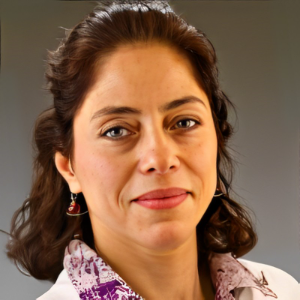Ovary gland
The ovary is an organ of the female reproductive system that produces eggs (ova) and the hormones estrogen and progesterone. It is located on either side of the uterus in the pelvic cavity, and is connected to the uterus via the fallopian tube. The ovary is composed of two parts, the cortex and the medulla, which contain the ovarian follicles that produce the eggs. The ovary also produces and contains the ova, which are released during ovulation. The ovary is responsible for the production of two primary hormones, estrogen and progesterone. Estrogen is the primary hormone responsible for the development of secondary sexual characteristics in females, such as breast development, body contouring, and body hair growth, as well as the regulation of the menstrual cycle. Progesterone is responsible for the preparation of the uterus for implantation of a fertilized egg, and the maintenance of pregnancy. The ovary undergoes cyclic changes throughout the menstrual cycle. During the early follicular phase, follicles in the ovary develop and the hormone estrogen is produced. This phase is followed by ovulation, during which a mature follicle ruptures and releases an egg into the Fallopian tube. The remaining follicle cells become the corpus luteum, which produces progesterone. This hormone helps prepare the endometrium for implantation of a fertilized egg and maintains the pregnancy if one is established. The corpus luteum eventually degenerates and the cycle begins again. The ovary is an essential organ of the female reproductive system and its functions are vital for fertility and the maintenance of pregnancy.
The ovary is an organ of the female reproductive system that produces eggs (ova) and the hormones estrogen and progesterone. It is located on either side of the uterus in the pelvic cavity, and is connected to the uterus via the fallopian tube. The ovary is composed of two parts, the cortex and the medulla, which contain the ovarian follicles that produce the eggs. The ovary also produces and contains the ova, which are released during ovulation. The ovary is responsible for the production of two primary hormones, estrogen and progesterone. Estrogen is the primary hormone responsible for the development of secondary sexual characteristics in females, such as breast development, body contouring, and body hair growth, as well as the regulation of the menstrual cycle. Progesterone is responsible for the preparation of the uterus for implantation of a fertilized egg, and the maintenance of pregnancy. The ovary undergoes cyclic changes throughout the menstrual cycle. During the early follicular phase, follicles in the ovary develop and the hormone estrogen is produced. This phase is followed by ovulation, during which a mature follicle ruptures and releases an egg into the Fallopian tube. The remaining follicle cells become the corpus luteum, which produces progesterone. This hormone helps prepare the endometrium for implantation of a fertilized egg and maintains the pregnancy if one is established. The corpus luteum eventually degenerates and the cycle begins again. The ovary is an essential organ of the female reproductive system and its functions are vital for fertility and the maintenance of pregnancy.
Ovary gland Conferences | Ovary gland Conference | Ovary gland Congress | Ovary gland Meetings | Ovary gland Events | Ovary gland Workshops | Ovary gland Forum | Ovary gland Summit | Ovary gland Convention | Ovary gland Symposium
The ovary is an organ of the female reproductive system that produces eggs (ova) and the hormones estrogen and progesterone. It is located on either side of the uterus in the pelvic cavity, and is connected to the uterus via the fallopian tube. The ovary is composed of two parts, the cortex and the medulla, which contain the ovarian follicles that produce the eggs. The ovary also produces and contains the ova, which are released during ovulation. The ovary is responsible for the production of two primary hormones, estrogen and progesterone. Estrogen is the primary hormone responsible for the development of secondary sexual characteristics in females, such as breast development, body contouring, and body hair growth, as well as the regulation of the menstrual cycle. Progesterone is responsible for the preparation of the uterus for implantation of a fertilized egg, and the maintenance of pregnancy. The ovary undergoes cyclic changes throughout the menstrual cycle. During the early follicular phase, follicles in the ovary develop and the hormone estrogen is produced. This phase is followed by ovulation, during which a mature follicle ruptures and releases an egg into the Fallopian tube. The remaining follicle cells become the corpus luteum, which produces progesterone. This hormone helps prepare the endometrium for implantation of a fertilized egg and maintains the pregnancy if one is established. The corpus luteum eventually degenerates and the cycle begins again. The ovary is an essential organ of the female reproductive system and its functions are vital for fertility and the maintenance of pregnancy.

Neda Zarrin-Khameh
Baylor College of Medicine, United States
Marlen Sulamanidze
Total Charm Clinic, Georgia
Mohamed M Hosni
London North West University Healthcare NHS Trust, United Kingdom
Neda Zarrin-Khameh
Baylor College of Medicine, United States
Marlen Sulamanidze
Total Charm Clinic, Georgia
Mohamed M Hosni
London North West University Healthcare NHS Trust, United Kingdom




Title : Evaluate the changes in SP-D levels in plasma during different phases of the menstrual cycle recruited from the Well- Adult Surfactant Protein Study (WASP)
Natnicha Kitti udom, University College London, Thailand
Title : Synergistic antifibrotic potential of protocatechuic acid and D-Carvone in liver protection
Ling Yin, Hefei Comprehensive National Science Center, China
Title : Pathologic findings in women with atypical glandular cells on Pap test
Neda Zarrin-Khameh, Baylor College of Medicine, United States
Title : Non-ablative radiofrequency for pelvic floor dysfunction and female intimate anti-aging: a 6-month prospective multi-centre cohort objectiv
Shaadaiti Wufuer, First Affiliated Hospital of Xinjiang Medical University, China
Title : Benign gynecological conditions and lifetime contraceptive patterns: a population-based analysis of the 2022–2023 national survey of family growth
Mayi Gnofam, Stony Brook University, United States
Title : Hysteroscopic endometrial resection with resectoscope versus Novasure ablation: A look at patient satisfaction with treatment of abnormal uterine bleeding and rates of progression to hysterectomy
Genevieve Kan, West Gippsland Healthcare Group, Australia